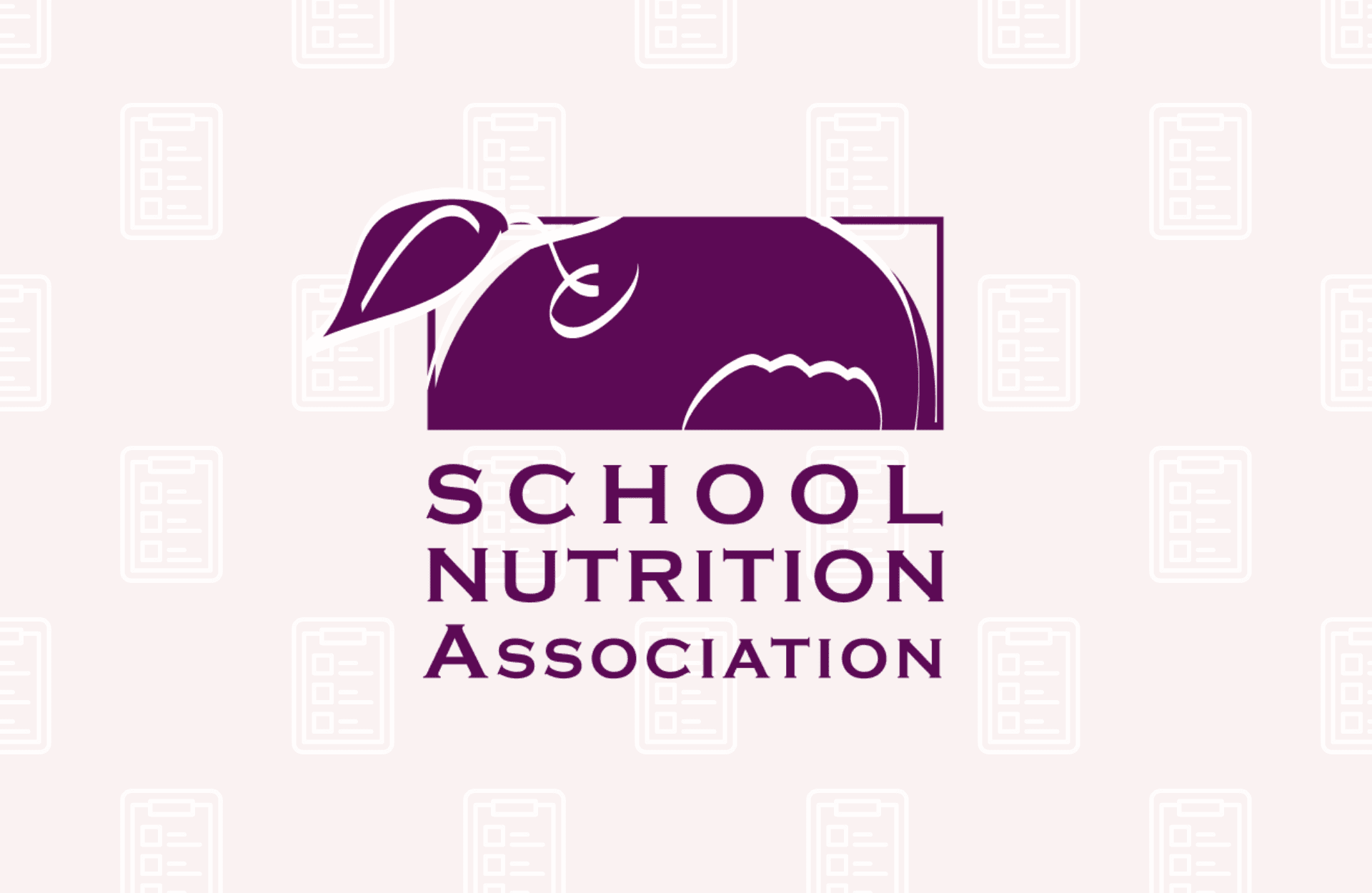FOR IMMEDIATE RELEASE:
Contact: Diane Pratt-Heavner Pratt-Heavner
(703)576-7526
media@schoolnutrition.org
90% of Districts to Exceed School Meal Whole Grain Mandates
2019-08-20
ARLINGTON, VA (August 20, 2019) – Whole grains will remain a staple on school lunch trays across the country this fall, according to School Nutrition Association’s (SNA) recent survey of school meal programs nationwide. From whole grain Asian noodle bowls to made-to-order gourmet salads, on-trend menu options will abound in the cafeteria, with students choosing from a wide range of customizable, clean label and ethnic menu options. The 2019 School Nutrition Trends Report also covers unpaid student meal debt.
WHOLE GRAIN SUCCESSES:
In July, updated whole grain regulations for school meals took effect, mandating that at least half of all grains offered must be whole grain rich. The 2019 Trends Report reveals over 90% of responding districts will exceed these federal whole grain requirements this school year, with more than 70% reporting that about three-quarters or more of the grains offered will be whole grain rich. Students will continue to choose from options like whole grain Lasagna ; subs ; Gorditas; and scratch-made whole grain muffins and warm cherry crisp.
SNA advocated for this rule change as schools struggled to meet the previous mandate that all grains must be whole grain rich. Many schools encountered strong regional and cultural preferences for a few specific items like white rice, tortillas or bagels, since few families or restaurants serve only whole grain rich foods. More than 80% of districts surveyed identified at least one barrier to increasing whole grain options, with student acceptance ranking as the top challenge. However, nearly 90% of districts are working to increase student acceptance of whole grains through one or more cited tactics, including student taste tests, and the use of white wheat for a lighter, softer texture
“School nutrition professionals work constantly to improve the nutrition and quality of school meals, while applying on-trend menu concepts to keep these healthy meals fresh and appealing to students,” said SNA President Gay Anderson, SNS. “Despite limited funding, strict regulatory requirements and notoriously fickle student tastes, school nutrition programs ensure nearly 30 million students are nourished and ready to learn each school day.”
EMERGING MENU TRENDS:
School meal programs are utilizing popular restaurant trends in the cafeteria to appeal to increasingly diverse student preferences and combat declining school lunch participation. Today’s food savvy students expect a wide range of choices, and cafeterias are delivering – nearly 85% of districts offer customizable menu options such as made-to-order salads , Asian entrée bars , Build Your Own Açaí Bowls and flavor stations that allow students to add a variety of low or no sodium seasonings or sauces to their meals.
School menus also feature more ethnic flavors, with about half of districts reportedly adding new international dishes this school year. An additional 21% are considering or testing potential new ethnic options such as Chicken Tikka Masala , Korean BBQ Chicken Bowls , Greek Gyros , Chinese Noodle and Ramen Bowls .
School nutrition professionals are also keeping up with clean label trends, serving meals with fewer ingredients and additives. Last school year, about half of districts served cleaner label menu options, such as chicken raised without antibiotics , sausage without nitrates and foods with fewer artificial colors and preservatives . Nearly all (91%) of these districts are either considering or planning to expand clean label choices in the new school year. Among districts that did not offer cleaner label options last school year, 45% are either considering or planning to do so this year.
UNPAID STUDENT MEAL DEBT:
Federal funds for school meals only cover the full cost of meals served to students enrolled in the federal free meal program. Schools must charge non-enrolled students the full price (or the reduced-price copay) to cover food, labor and other costs. The 2019 Trends Report revealed widespread challenges when students lack adequate funds to pay for their meals:
- 75% of responding districts report having unpaid student meal debt at the end of the 2017/18 school year.
- The amount of unpaid student meal debt reported by districts has increased substantially. Compared to previous SNA surveys, the median amount of unpaid meal debt per-district rose by 70% since the 2012/13 school year.
- 43% of districts with unpaid meal debt reported that the number of students without adequate funds increased last school year.
Federal regulations mandated that school districts implement unpaid meal policies by the start of the 2017/18 school year. Schools are also required to make efforts to collect debt incurred from unpaid meals and are prohibited from using federal funds to pay off unpaid meal debt.
To address the unpaid meal charge problem and ensure all students are fueled for academic achievement, SNA has advocated for universal free school meals.
“Students can’t hear their teachers over the sound of a growling stomach,” said SNA President Gay Anderson, SNS. “We know healthy school meals are just as important to student learning as textbooks and pencils. The federal government should offer meals to all students free of charge as part of their education.”
SNA’s 2019 School Nutrition Trends Report is based on survey responses from 812 school districts nationwide. The survey was distributed in May/June 2019.
Members of the media may contact media@schoolnutrition.org to request the complete report. SNA members can access the report here.
About School Nutrition Association:
The School Nutrition Association (SNA) is a national, non-profit professional organization representing 58,000 school nutrition professionals across the country. Founded in 1946, SNA and its members are dedicated to making healthy school meals and nutrition education available to all students. For more information on school meals, visit www.SchoolNutrition.org/SchoolMeals.
Related Articles

SNA Conference Offers School Meal Innovations
Read More

SNA Urges MAHA Commission to Invest in School Meals
Read More




